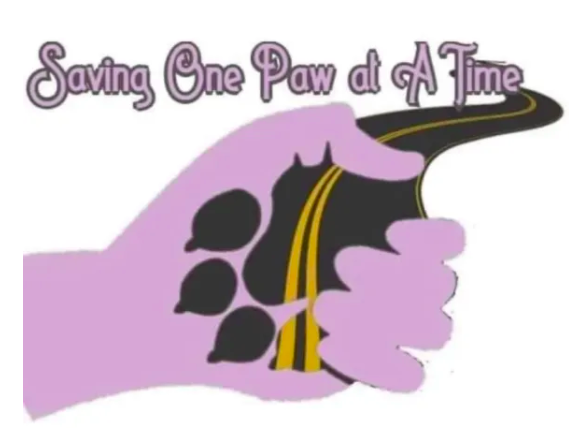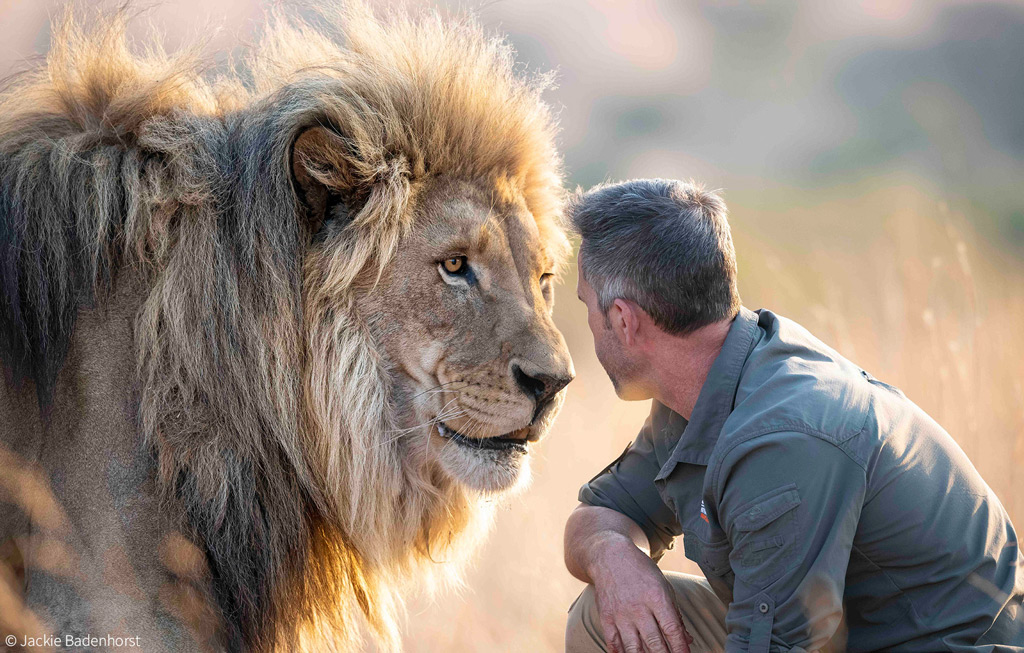Imagine a world where majestic lions roam freely in their natural habitats, their roars echoing through vast savannas. Sadly, this is becoming less of a reality as the lion population continues to decline at an alarming rate. However, there is a glimmer of hope in the form of lion rehabilitation centers. These extraordinary facilities are dedicated to rescuing, rehabilitating, and releasing lions back into the wild. Through their tireless efforts, these centers are not only saving individual lions but also working towards the preservation of this magnificent species. Join us as we delve into the world of lion rehabilitation centers and discover the incredible work they are doing to ensure a future for lions.
The Importance of Lion Rehabilitation Centers
Lion rehabilitation centers play a crucial role in preserving lion populations, addressing human-wildlife conflict, and promoting ecotourism. These centers serve as a safe haven for injured, orphaned, and abandoned lions, providing them with the care, support, and resources they need to recover and eventually be released into the wild. By focusing on rescue, rehabilitation, reintroduction, education, and community outreach, these centers not only contribute to lion conservation efforts but also foster coexistence between humans and lions.
Preserving Lion Populations
Lion rehabilitation centers are instrumental in preserving lion populations, which have been facing a steady decline in recent years. Through their efforts in rescuing and rehabilitating injured or orphaned lions, these centers not only provide immediate care but also ensure the long-term survival of these magnificent creatures. By nursing them back to health, these centers contribute to enhancing genetic diversity, which is vital for the overall health and resilience of lion populations.
Addressing Human-Wildlife Conflict
Human-wildlife conflict poses a significant challenge not only to lion conservation but also to the safety and livelihoods of local communities. Lion rehabilitation centers play a crucial role in addressing this conflict by mitigating the negative interactions between lions and humans. Through education and community outreach programs, these centers raise awareness about the importance of coexistence and engage with local communities to develop strategies that reduce conflicts and protect both people and lions.
Promoting Ecotourism
Lion rehabilitation centers also have a significant impact on promoting ecotourism. By providing a safe and controlled environment for visitors to observe and learn about lions, these centers create sustainable economic opportunities for local communities. Ecotourism initiatives, such as guided tours and volunteer programs, not only generate income but also raise awareness about the plight of lions and the importance of their conservation. By nurturing a sense of responsibility and appreciation for these majestic animals, the centers contribute to the long-term viability of conservation efforts.
The History and Evolution of Lion Rehabilitation Centers
Early Beginnings
The concept of lion rehabilitation centers can be traced back to the early 20th century when individuals and organizations recognized the need to protect and conserve lions. Initially, these centers were established as sanctuaries or rescue facilities, primarily focused on providing temporary shelter to injured or orphaned lions. Over time, as the understanding of lion behavior and rehabilitation techniques improved, these centers evolved to incorporate comprehensive rehabilitation programs aimed at preparing lions for life in the wild.
Technological Advances
Technological advances have played a crucial role in the development and growth of lion rehabilitation centers. The availability of advanced medical equipment and diagnostic tools has revolutionized the veterinary care provided to the lions, enabling more accurate diagnosis and treatment. DNA analysis techniques have also facilitated genetic monitoring and research, allowing for the preservation of genetic diversity within lion populations. Furthermore, advancements in tracking technologies, such as GPS collars, have greatly enhanced the ability to monitor released lions and gather valuable data on their behavior and movement patterns.
Collaboration with Conservation Organizations
Lion rehabilitation centers have benefited greatly from collaborations with conservation organizations. These partnerships not only provide financial support but also bring a wealth of knowledge, expertise, and resources. Conservation organizations often conduct research, develop conservation strategies, and implement programs in collaboration with these centers. The mutual exchange of knowledge and support between rehabilitation centers and conservation organizations has been integral in furthering lion conservation efforts and strengthening the overall impact of rehabilitation programs.

The Role of Lion Rehabilitation Centers
Rescue and Rehabilitation
Rescue and rehabilitation are at the core of the role played by lion rehabilitation centers. These centers provide a safe and nurturing environment for injured, orphaned, and abandoned lions, where they receive expert veterinary care, nutrition, and behavioral enrichment. The skilled and dedicated staff work tirelessly to nurse the lions back to health, addressing physical injuries, malnutrition, and emotional trauma. Through this process, not only are the lions given a second chance at life, but they are also prepared for their eventual reintroduction into the wild.
Reintroduction into the Wild
One of the primary goals of lion rehabilitation centers is to reintroduce rehabilitated lions into their natural habitats. This process involves a gradual transition, where lions are first acclimated to larger enclosures that resemble their natural surroundings. As they demonstrate the necessary skills and behaviors needed for survival, such as hunting and social integration, they are gradually introduced into protected areas or game reserves. This careful and gradual approach ensures that the lions have the best chance of thriving in the wild and contributing to the recovery of wild lion populations.
Education and Community Outreach
Lion rehabilitation centers recognize the importance of education and community outreach in achieving their goals. These centers actively engage with local communities through educational programs that highlight the ecological and economic significance of lions. By fostering positive relationships with local communities, these centers encourage sustainable practices, provide opportunities for employment and income generation, and cultivate a sense of pride and ownership over lion conservation. Education and community outreach programs also dispel myths and misconceptions surrounding lions, helping to reduce conflicts and promote peaceful coexistence.
Challenges Faced by Lion Rehabilitation Centers
Limited Funding and Resources
One of the major challenges faced by lion rehabilitation centers is the limited availability of funding and resources. The costs associated with the care, rehabilitation, and release of lions can be substantial, requiring ongoing financial support. Securing sustainable funding models, raising awareness about the importance of lion conservation, and fostering partnerships with donors and stakeholders are vital to overcome these challenges and ensure the long-term viability of these centers.
Human-Wildlife Conflict
Human-wildlife conflict poses a significant challenge to the work of lion rehabilitation centers. As lion populations come into contact with human settlements, conflicts arise, leading to retaliatory killings of lions and human injuries. Addressing this conflict requires the collaboration of multiple stakeholders, including local communities, conservation organizations, and government authorities. Developing effective strategies for conflict mitigation, such as the construction of predator-proof enclosures and the promotion of alternative livelihoods, is crucial to ensure the safety of both people and lions.
Genetic Diversity
Maintaining genetic diversity within lion populations is essential for their long-term survival and adaptability. Lion rehabilitation centers face challenges in ensuring genetic diversity among the lions under their care. The genetic pool within rehabilitation centers may be limited, especially if the center is operating with a small population of lions. Collaborations with other centers and organizations are therefore crucial to facilitate the exchange of genetic material and prevent the negative impacts of inbreeding. Monitoring and managing the genetic diversity of lions in rehabilitation centers is fundamental to their successful reintroduction into the wild.

Success Stories of Lion Rehabilitation Centers
Reintroduction of Rehabilitated Lions
One of the significant success stories of lion rehabilitation centers is the reintroduction of rehabilitated lions into the wild. Through careful and gradual acclimatization, lions that have undergone rehabilitation have successfully integrated into protected areas and game reserves. These reintroduced lions have not only thrived in their natural habitats but have also contributed to the growth and recovery of local lion populations. The successful restoration of lions to their native habitats serves as a testament to the efficacy and importance of these rehabilitation programs.
Mitigating Human-Wildlife Conflict
Lion rehabilitation centers have made significant strides in mitigating human-wildlife conflict. Through education and community outreach programs, these centers have raised awareness about the importance of peaceful coexistence with lions. By promoting alternative livelihood opportunities and implementing measures to protect livestock from predation, such as the construction of predator-proof enclosures, these centers have successfully reduced incidents of conflict between humans and lions. The collaborative efforts of rehabilitation centers, local communities, and conservation organizations have led to more harmonious relationships and improved coexistence.
Educating Local Communities
Education is a powerful tool in the conservation of lions and their habitats. Lion rehabilitation centers have made a substantial impact on educating local communities about the importance of lion conservation. Through interactive programs, school visits, and community workshops, these centers have instilled a sense of appreciation and responsibility for the preservation of lions among local communities. By fostering positive attitudes towards lions and dispelling misconceptions, rehabilitation centers have empowered communities to actively participate in the protection and conservation of these majestic creatures.
Best Practices for Lion Rehabilitation Centers
Collaboration with Local Communities
Collaborating with local communities is a best practice that ensures the success and sustainability of lion rehabilitation centers. By actively involving local communities in decision-making processes and initiatives, these centers promote a sense of ownership over conservation efforts. This collaboration allows for the development of strategies that incorporate traditional knowledge, cultural values, and community perspectives, fostering mutual respect and understanding. By working hand in hand with local communities, rehabilitation centers can address challenges more effectively and create lasting positive change.
Sustainable Funding Models
Developing sustainable funding models is essential for the long-term success of lion rehabilitation centers. Relying on a single source of funding can be risky, as it may not be consistent or sufficient. Successful centers diversify their income streams, which may include a combination of grants, donations, fundraising events, ecotourism initiatives, and partnerships with governmental and non-governmental organizations. Implementing sound financial management practices, transparency, and accountability are also crucial in gaining and retaining the trust of donors and ensuring the financial stability of these centers.
Research and Monitoring
Research and monitoring are integral components of successful lion rehabilitation centers. By conducting research on lion biology, behavior, and habitat requirements, these centers can tailor their rehabilitation programs to suit the specific needs of the lions under their care. Monitoring the released lions in the wild allows for the collection of valuable data on their movements, interactions, and survival rates. This information not only contributes to scientific knowledge but also enables the continuous improvement of rehabilitation techniques and increases the chances of long-term success.

The Impact of Lion Rehabilitation Centers on Conservation Efforts
Contribution to Species Conservation
Lion rehabilitation centers have a significant impact on the conservation of lion species. By rescuing and rehabilitating injured or orphaned lions, these centers contribute to maintaining healthy populations and genetic diversity. The successful reintroduction of rehabilitated lions into the wild ensures the survival and growth of lion populations in their natural habitats. Additionally, the knowledge and expertise gained from rehabilitation programs can be shared with other conservation efforts, thus amplifying the impact and effectiveness of lion conservation globally.
Reducing Human-Wildlife Conflict
The efforts of lion rehabilitation centers in mitigating human-wildlife conflict have tangible outcomes in reducing human injuries and retaliatory killings of lions. By engaging with local communities and implementing effective conflict mitigation strategies, these centers create an environment of coexistence where people and lions can live harmoniously. As conflict incidents decrease, the safety and well-being of both humans and lions are improved, contributing to a more sustainable and peaceful future for all.
Promoting Awareness and Advocacy
Lion rehabilitation centers play a vital role in promoting awareness and advocacy for lion conservation. Through their education and community outreach programs, these centers raise awareness about the importance of lions and the threats they face. By instilling a sense of responsibility and appreciation for lions among local communities, these centers empower individuals to become advocates for conservation. The increased awareness and advocacy generated by these centers have a ripple effect, inspiring more people to take action and contribute to the preservation of lions and their habitats.
The Future of Lion Rehabilitation Centers
Expansion and Growth
The future of lion rehabilitation centers holds the promise of expansion and growth. As the need for lion conservation becomes more pressing, the demand for the services provided by these centers continues to rise. With increased funding and support, there is potential for these centers to expand their facilities and reach, accommodating more lions in need of rehabilitation. Expanding the number of rehabilitation centers across lion habitats ensures that lions from different regions can be rehabilitated and released into their specific natural environments, enhancing the genetic diversity and resilience of wild populations.
Technological Advancements
The future of lion rehabilitation centers is intertwined with the advancements in technology. Continued developments in veterinary medicine, genetics, and tracking technologies will enhance the abilities of these centers to care for and monitor lions. Improved diagnostic tools and treatment methods will enable more accurate and efficient care, leading to better outcomes for the lions under rehabilitation. With advanced tracking technologies, such as GPS collars and camera traps, rehabilitation centers will be able to gather more detailed information on the behavior and movement patterns of released lions, contributing to scientific knowledge and conservation efforts.
Enhancing Partnerships
Partnerships and collaborations are key to the future success of lion rehabilitation centers. Strengthening partnerships with conservation organizations, governmental agencies, local communities, and other stakeholders will enhance the impact and reach of these centers. Collaborative efforts will facilitate the exchange of knowledge, resources, and expertise, leading to more effective and sustainable rehabilitation programs. By working together, these partnerships can address challenges and advocate for the protection and conservation of lions on a broader scale, ensuring a brighter future for these majestic animals.

The Role of Individuals in Supporting Lion Rehabilitation Centers
Volunteering and Internships
Individuals can actively support lion rehabilitation centers by volunteering or participating in internship programs. These centers often offer opportunities for individuals to contribute their skills, time, and resources towards the care and rehabilitation of lions. Volunteering and internships provide hands-on experience in lion conservation, allowing individuals to make a direct impact and gain a deeper understanding of the challenges and successes of rehabilitation efforts. By dedicating their time and expertise, individuals can play a vital role in supporting the day-to-day operations of these centers and contribute to the well-being of the lions.
Donations and Fundraising
Donations and fundraising efforts are essential in supporting lion rehabilitation centers financially. These centers rely on donations from individuals, corporations, and foundations to cover the costs associated with the care, rehabilitation, and release of lions. Donations can be made in various forms, including monetary contributions, supplies, and equipment. Fundraising events, such as charity runs, auctions, or online campaigns, are effective ways for individuals to mobilize their networks and raise funds for these centers. Every donation, regardless of size, makes a difference and enables the continuation of vital conservation work.
Advocacy and Awareness Campaigns
Individuals can also support lion rehabilitation centers by becoming advocates for lion conservation and raising awareness about the importance of these centers. By sharing information, stories, and success stories on social media platforms and within their communities, individuals can contribute to the wider dialogue on lion conservation. Engaging in conversations, organizing awareness campaigns, or participating in public events related to lion conservation allows individuals to amplify the message and inspire others to take action. Together, these advocacy and awareness efforts create a groundswell of public support, leading to increased resources and protection for lions and their habitats.
Conclusion
Lion rehabilitation centers play a vital role in preserving lion populations, addressing human-wildlife conflict, and promoting ecotourism. These centers have evolved over time, incorporating technological advances and collaborating with conservation organizations to enhance their impact. Through rescue, rehabilitation, reintroduction, education, and community outreach, these centers contribute to the conservation of lions and foster coexistence between humans and these majestic creatures.
While lion rehabilitation centers face challenges such as limited funding, human-wildlife conflict, and genetic diversity, their successes in reintroduction, conflict mitigation, and community education provide hope for the future. By implementing best practices, such as collaborating with local communities, developing sustainable funding models, and conducting research and monitoring, these centers can continue to make significant contributions to lion conservation. The impact of lion rehabilitation centers extends beyond species conservation, reducing conflict, promoting awareness and advocacy, and creating a brighter future for lions and the ecosystems they inhabit.
Individuals, too, have a critical role to play in supporting lion rehabilitation centers. Through volunteering, donations, fundraising, and advocacy, individuals can contribute directly to the care and rehabilitation of lions, ensuring the continued success of these centers. Together, by recognizing the importance of these centers and actively supporting their efforts, we can save lions, one paw at a time.


